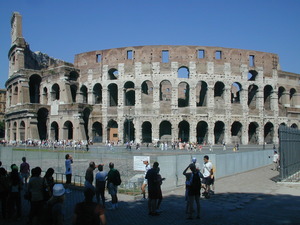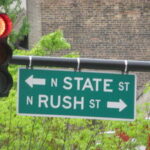Bryn Mawr College describes ancient Rome as the era in history spanning 600 years from the first century BC to the fifth century AD. Ancient Rome represents the period in history and civilization when autocratic Emperors ruled Rome and its territories. At the peak of power, the territories encompassed lands in West and South Europe especially around the Mediterranean Sea, Britain, Asia Minor and North Africa. The accomplishments of this era impacted civilizations up to contemporary time.
Invention of Cement/Concrete
The discovery of fast curing cement represents a most powerful innovation. Accomplishments in other areas could not have occurred without the initial development of cement and concrete. According to the Smithsonian Magazine, modern concrete mixtures data back to ancient Rome. Vitruvius, an ancient Roman architect and engineer described the mixture of concrete as limestone, water, volcanic ash to construct cement and then add water, sand and aggregates of fine gravel. Concrete formed the basis for large-scale constructions found in the remains of large buildings in Rome today.
Road Design
Romans introduced the pavement of roadways with the straightest, flattest routes. Engineers today continue to use the same concept of design for roads. Brims Website describes the Roman design of roads. Before the advent of the Roman Empire, roads consisted of mud tracks. Since the Roman army required quick movement of their soldiers and gear, the Romans constructed roads as straight as possible. Roman surveyors located the routes without angles, curves or elevated pathways. The roads connected important towns in the Roman Empire. Many of the same roads exists today as those designed during ancient Rome.
Builders of Aqueducts
Even though other countries of ancient history such as Persia, India, Egypt and other Middle Eastern regions used water systems before ancient Rome, the Romans rank as the greatest aqua builders of ancient time. According to Crystalinks, the Roman Empire contained the most elaborate system developed by engineers to bring fresh water from the hillsides to the cities. The water system flowed by gravity both underground and elevated on elaborate concrete arches. Some aqueducts remain in use today. Modern engineers refers to aqueducts as any system of pipes, canals or sustaining structures constructed to move water from its source to a distribution place.
Architectural Design
Even though the amphitheater concept arises from the Greeks, the ancient Roman Coliseum represents the first free-standing amphitheater, according to Roman Life – Rome Italy. The ancient Roman Coliseum now resides on the new list of the 7 Wonders of the World. The Coliseum can be described as one of the most venerated works of architecture and engineering. The oval shaped structure seated 60,000 to 85,000 people and encompassed a lattice work structure and compartments in the base of the seating area. The base area housed the gladiators and wild animal. Where would the Super Bowls of modern times be without our sports areas today replicating aspects of the Roman Coliseum?
Shopping Mall Precursor
The Trajan’s Forum represents an example of a forerunner to today’s shopping malls. According to the University of Minnesota, this structure contained no less than 150 stores in the center of ancient Rome. The inventive architect Apollodorus of Damascus designed the covered Trajan’s market. The shops varied in size and resided on two levels, but most took up very small spaces. Behind the colonnade of Trajan’s forum, the curved façade of the markets can still be seen today.
Public Newspaper
Roman citizens became the first people to receive a daily newspaper. The Encyclopedia Britannica describes a daily handwritten newspaper, called the Acta Diurna or Daily Events, as a daily gazette started during the reign of Julius Caesar. Updating the public about official activities represented an attribute of most autocratic rulers. Military news and working class activities populated the Acta Diurna. The Acta Senatus or Proceedings of the Senate, a second newspaper, reported proclamations, edicts and political decisions made by the Roman Senate in ancient Rome.
Much of civilization in government and society as we know it today would not exist without the achievements in the Roman era. Many inventions arose from previous civilizations, but ancient Rome took many concepts to a higher level with massive developments.
.


